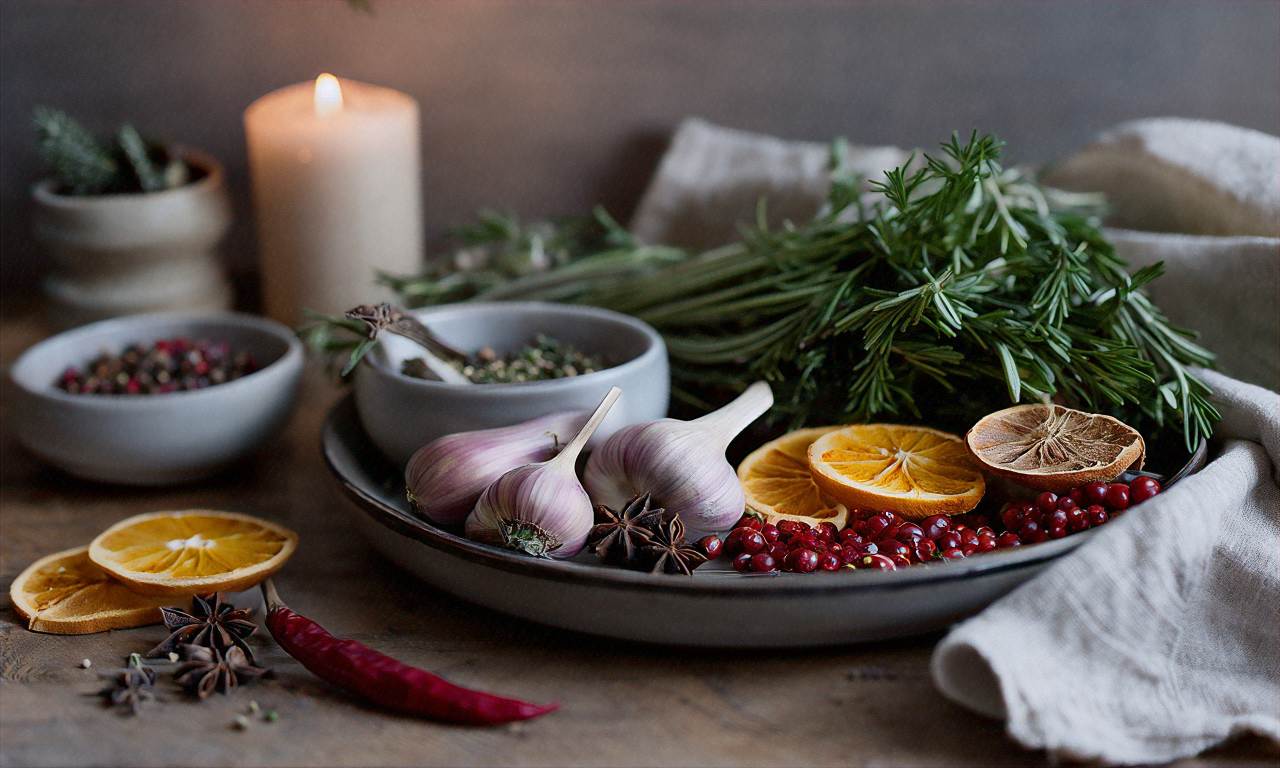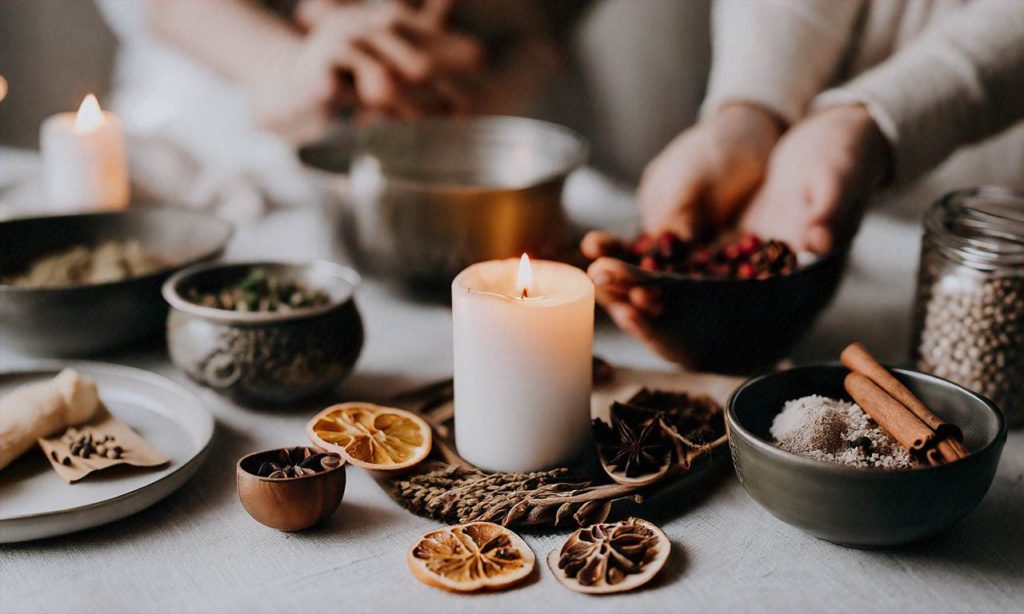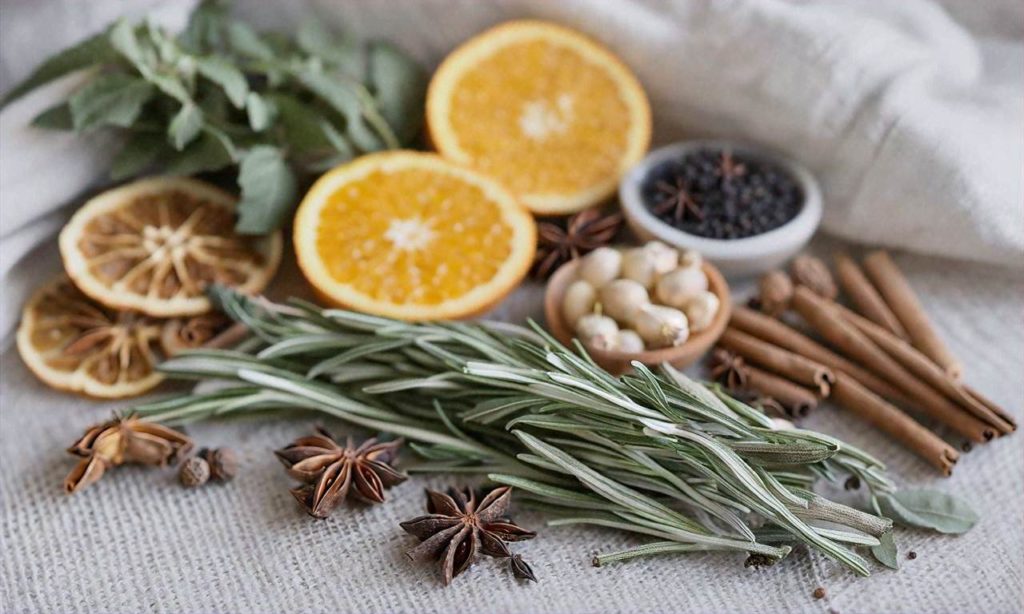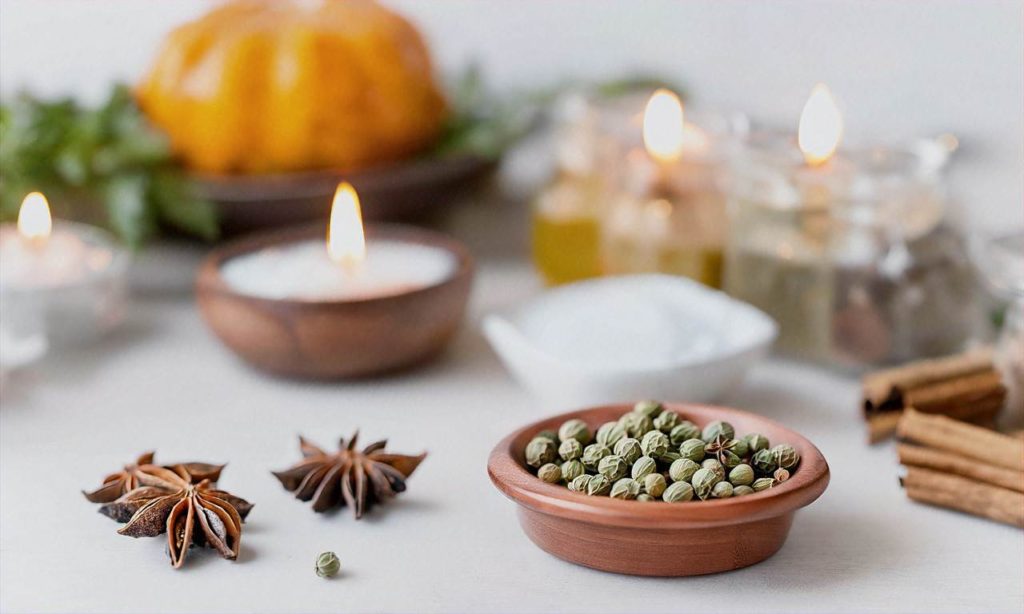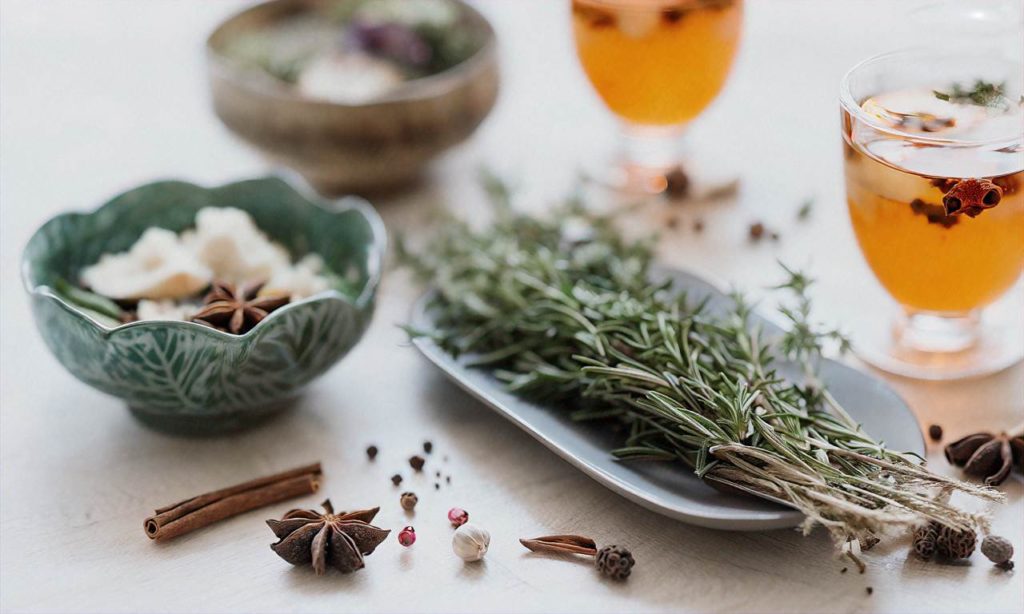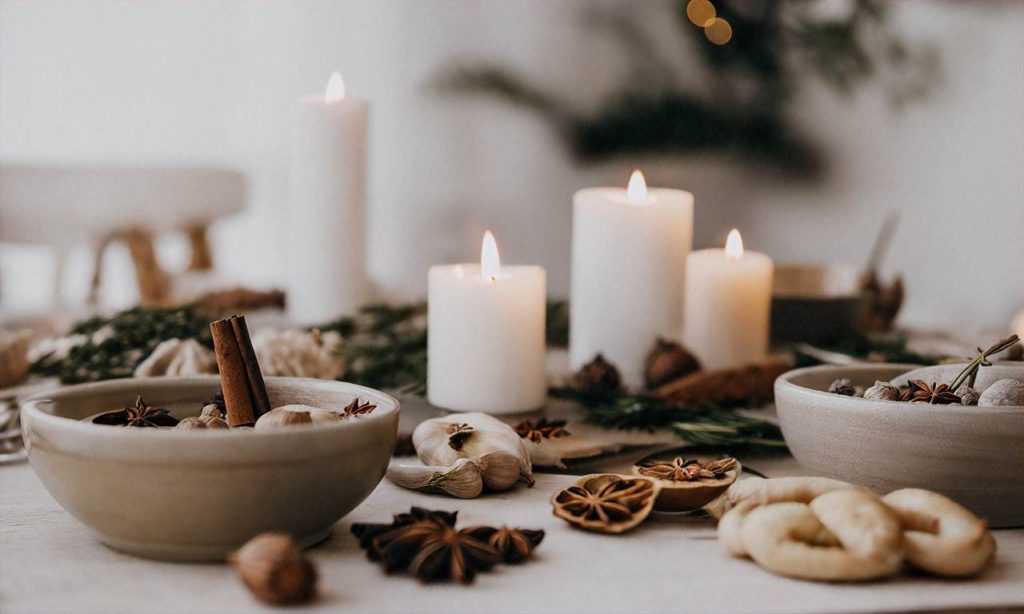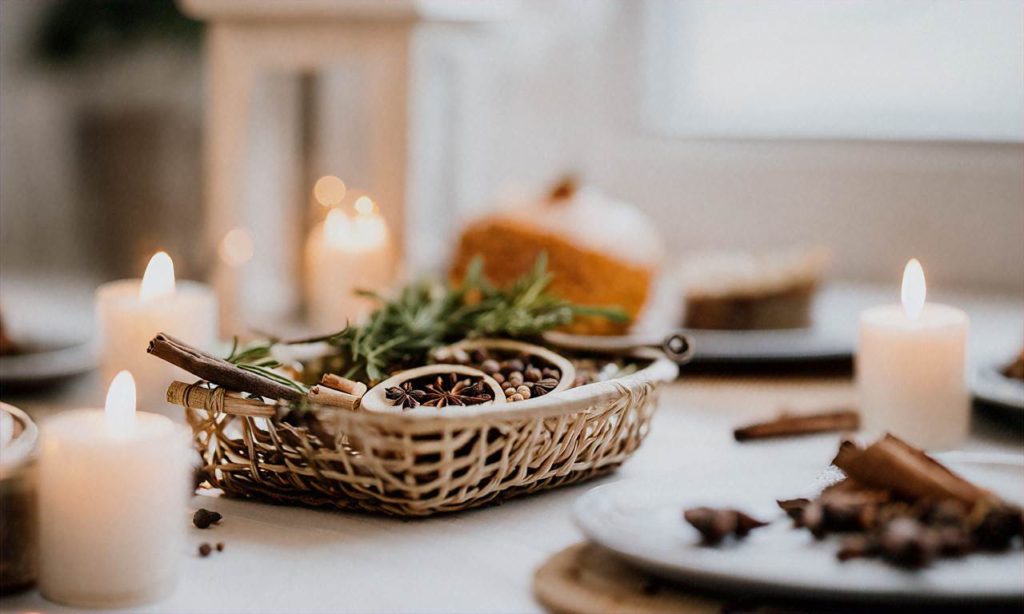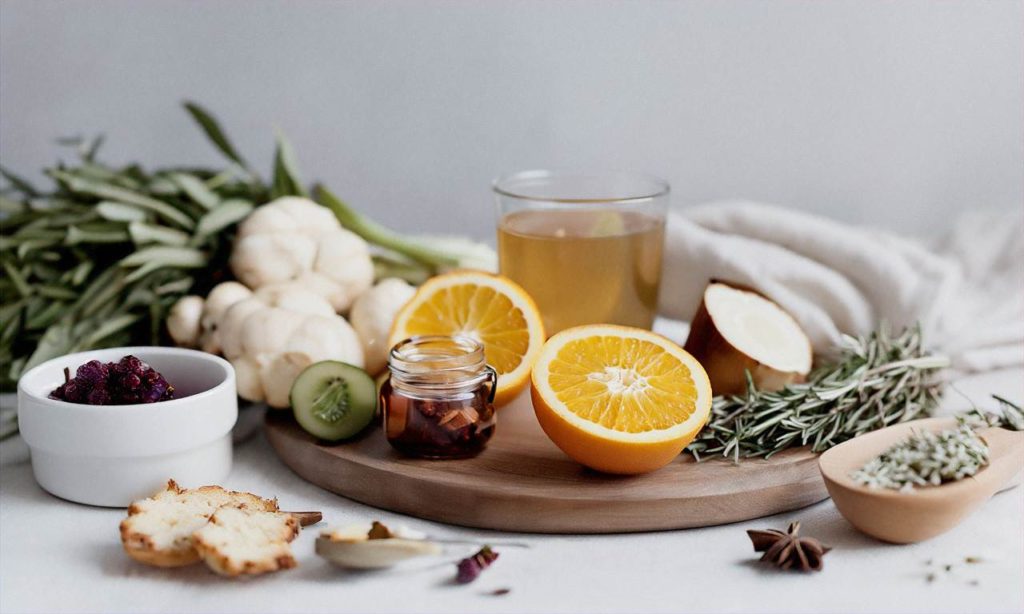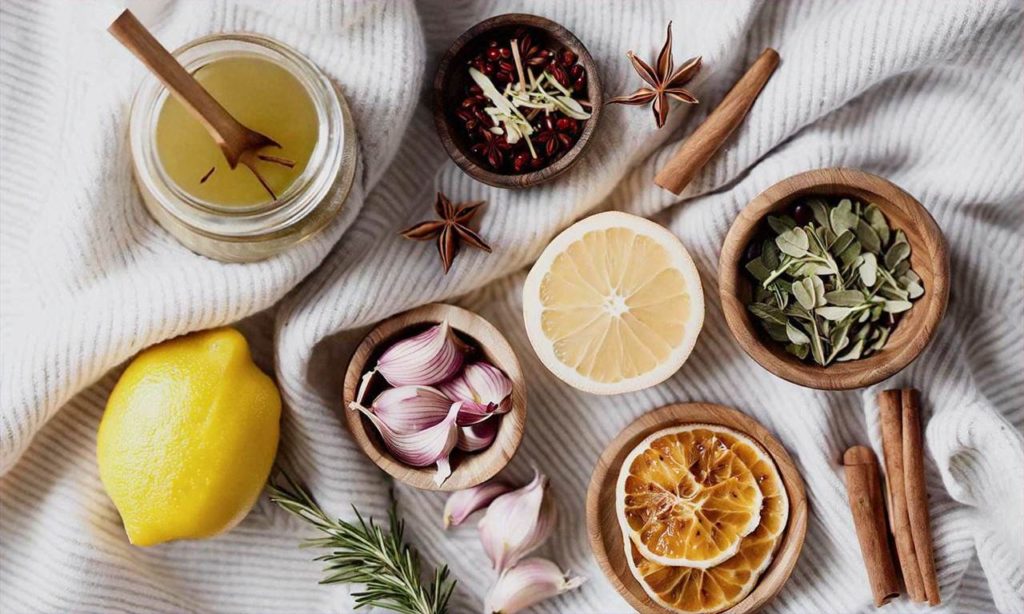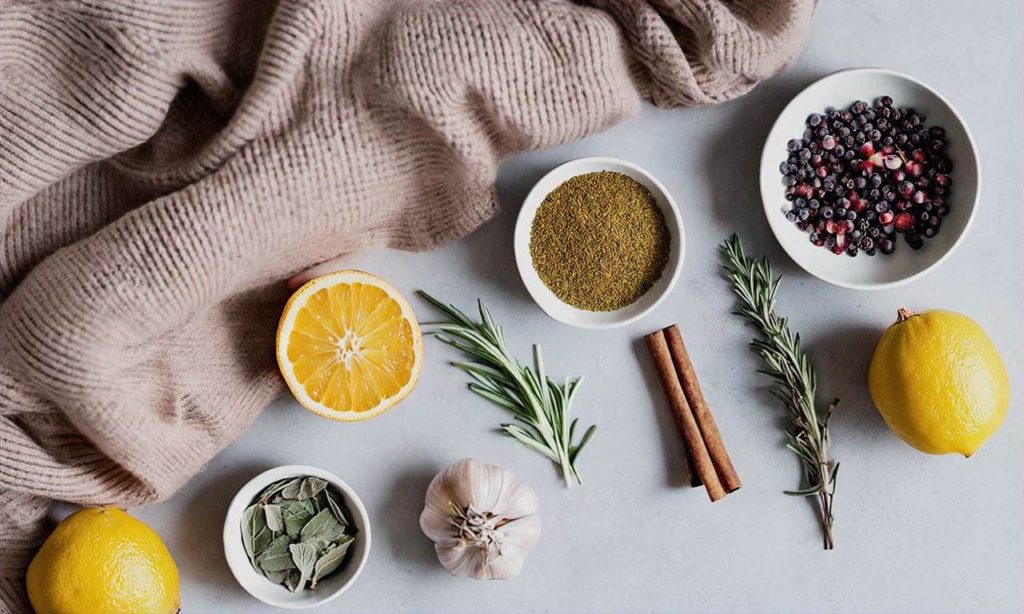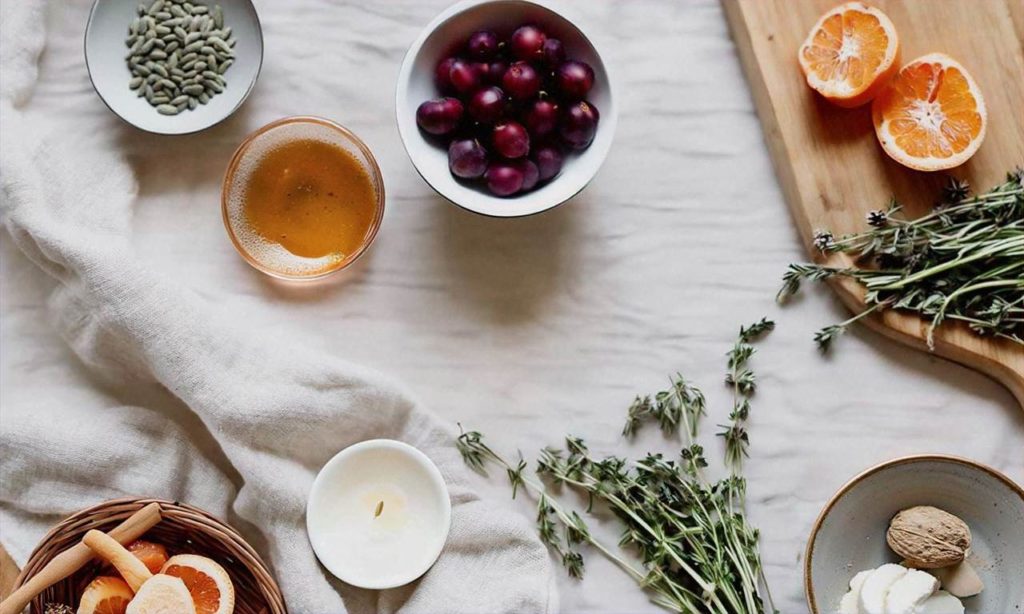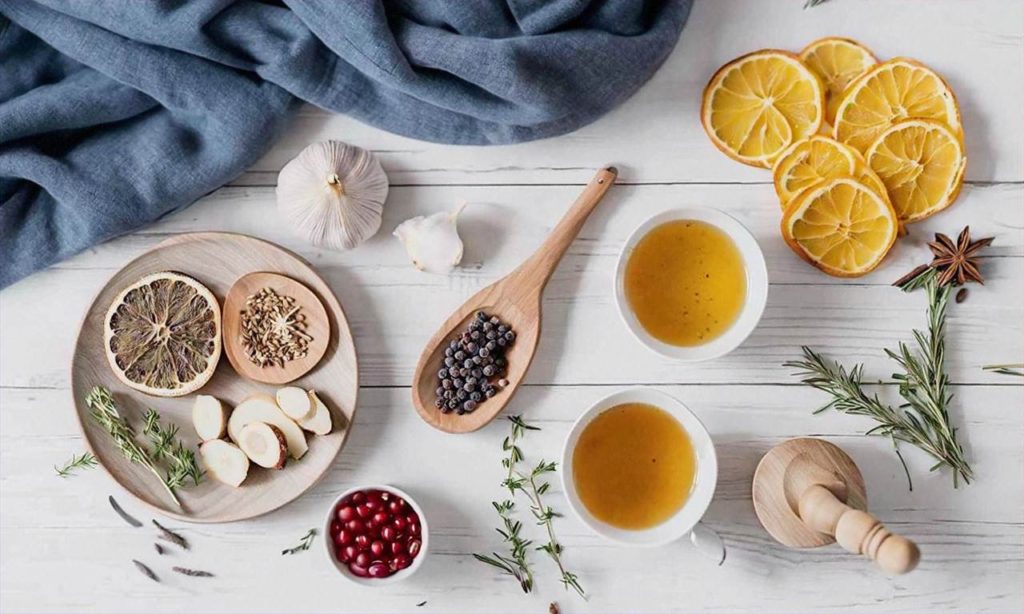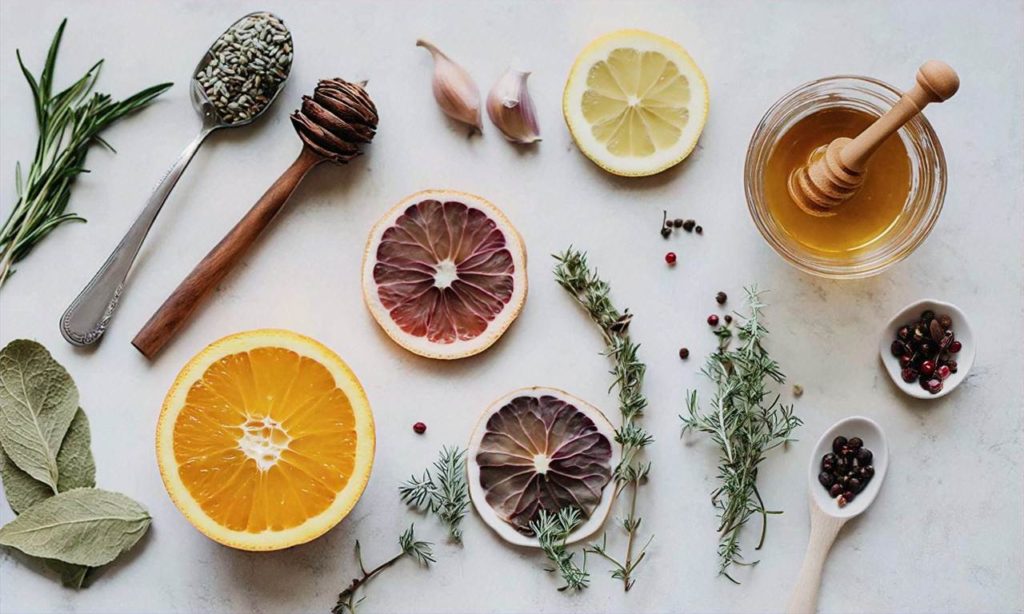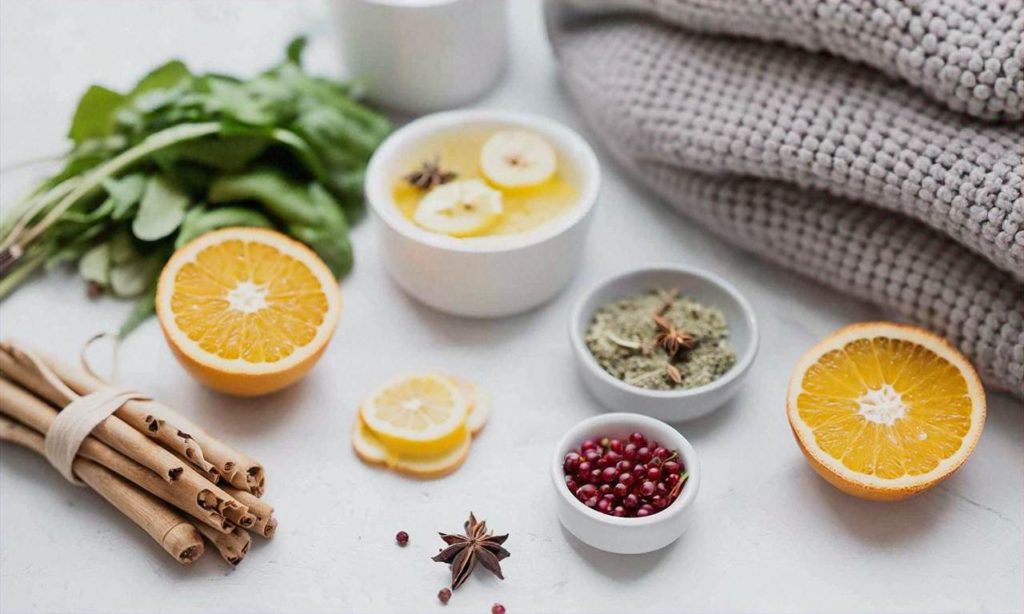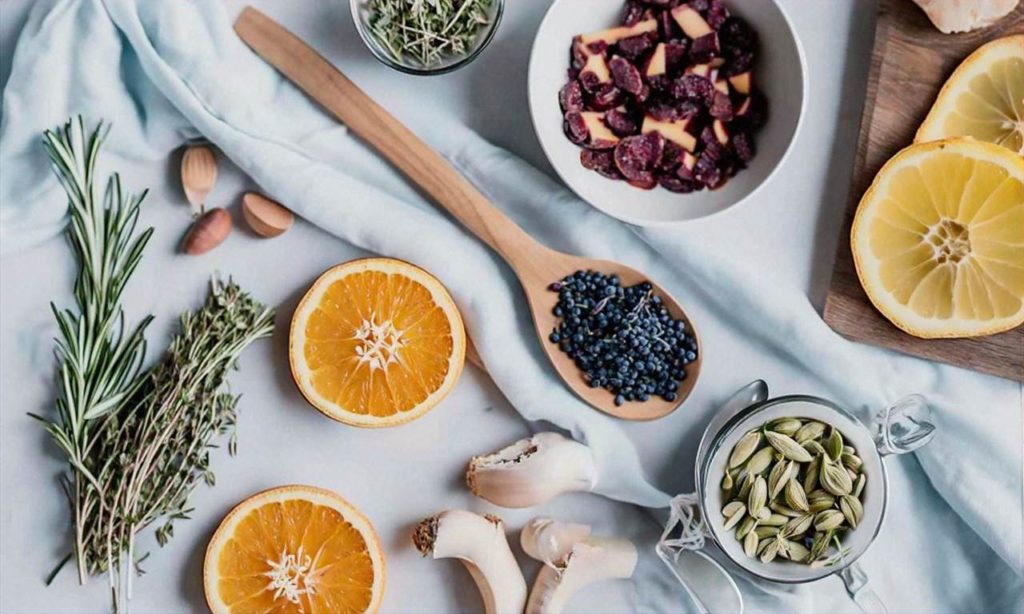The Best Herbs to Grow in Spring for Summer Use
When the weather begins to warm up in spring, it’s the perfect time to start planning and planting an herb garden that will thrive all summer long. Choosing the right herbs to grow in spring ensures you’ll have a bountiful harvest of fresh herbs to use in cooking, medicine, crafts and more once summer rolls around.
Some of the best herbs to plant in early to mid spring for use in summer include basil, parsley, cilantro, dill, oregano, sage, thyme, rosemary, chives, mint and lemon balm. These versatile, easy-to-grow herbs will flourish with proper spring care and provide abundant leaves, seeds, flowers and oils for culinary, medicinal and other applications during the warm summer months.
Basil
Sweet basil is a wonderfully aromatic annual herb that is indisputably one of the best options for a spring herb garden focused on summer use. This quintessential Italian herb grows rapidly once soil temperatures reach 50 degrees Fahrenheit. Plant basil outdoors after any danger of frost has passed, and you’ll be rewarded with plenty of flavorful leaves all summer long for making pesto, Caprese salad, tomato sauces and more. Basil also has some medicinal properties.
Parsley
A versatile biennial herb that often lives for two growing seasons, parsley can be planted in spring for a long summer harvest. Curly and flat-leaf Italian parsley varieties are equally useful for culinary purposes. Parsley has a long taproot so it should be sown directly into the ground rather than transplanted. This fresh-tasting herb is loaded with nutrition and makes a tasty, healthy addition to so many dishes.
Cilantro
Known as coriander once it goes to seed, cilantro is a fast-growing annual herb that does very well when planted in spring and typically lasts through the summer before bolting. All parts of this herb are edible, from the leaves and stems to the seeds. Cilantro adds a unique flavor to salsas, curries, salads and more. Just make sure to harvest it before it flowers or the leaves will become bitter and tough.
Dill
Dill is another annual herb that grows well when planted in spring for summer use. Valued for the distinct flavor of its feathery leaves as well as its aromatic seeds, dill has a variety of culinary uses, especially as a flavoring for pickles, fish and potatoes. Dill attracts beneficial insects to the garden too. Plant it near vegetables like broccoli, cabbage and lettuce.
Oregano and Marjoram
These aromatic perennial herbs in the mint family are excellent choices for a spring herb garden focused on summer harvesting. Oregano and its milder relative marjoram contain oils that give them their signature spicy-sweet flavors and fragrances. Once established, both herbs require little care while providing abundant leaves for cooking all summer long as well as pretty flowers that attract pollinators.
Thyme

Thyme is another hardy perennial herb that rewards the spring gardener with bountiful summer harvests once established. This Mediterranean staple comes in over 350 varieties, some more suitable for culinary use than others, like common thyme, lemon thyme and creeping thyme. Thyme retains its flavor well when dried, so large summer harvests can be preserved to season soups, stews, meats and more all year.
Sage
Salvia officinalis is the true culinary species of this aromatic, silvery-leaved perennial herb that has been grown for centuries in herb gardens. Although sage leaves can be harvested as soon as plants reach 6 to 8 inches tall, flavor and oil concentration peak just before summer flowering. Use fresh or dried sage leaves to season a variety of foods. Sage also has some medicinal properties and can be used to make stimulating teas.
Rosemary
Known as the “herb of remembrance,” this iconic Mediterranean woody perennial herb can grow quite large, even into a shrub over time, which makes rosemary a great choice for spring planting if you want abundant harvests for summer cooking. Both the leaves and flowers add flavor to seafood, meats, breads, oils and more. Rosemary is also used to make soothing herbal teas and hair rinses.
Chives
No herb garden is complete without chives. These hardy perennial bulbs multiply rapidly, ensuring you’ll have plenty of their grassy leaves to harvest all summer long. Both chive leaves and their edible lavender flowers add mild oniony flavor to salads, soups, omelets, baked potatoes and more. Regular harvesting encourages steady regeneration of leaves.

Peppermint and Spearmint
These spreading perennial mints are perfect for planting in spring because they need time to establish their extensive root systems before the high-harvest summer months. Peppermint and spearmint grow very aggressively, so plant them in containers unless you want them taking over your garden beds. Their leaves can be harvested as soon as plants reach 4 to 6 inches tall. These minty herbs have many culinary uses for summer beverages like mojitos, juleps and teas in addition to their medicinal properties.
Lemon Balm
A hardy perennial mint-relative, lemon balm is another great herb for spring planting to ensure abundant summer leaves for use as an herb tea, seasoning ingredient or essential oil. Lemon balm spreads vigorously, so keep an eye on it. But its lemony fragrance and flavor make it a great addition to summer harvests. Medicinally, lemon balm has soothing properties and is used to reduce stress, anxiety and insomnia.
This selection of 10 versatile, beginner-friendly herbs represents some of the very best options for spring planting to ensure bountiful harvests all summer long. Many can be dried or preserved as well, allowing you to enjoy the flavors and benefits of your homegrown herbs year-round.
When to Plant Popular Culinary Herbs for Summer
One of the keys to a successful herb garden is knowing the right time to plant each type of herb. Planting at the correct time ensures your herbs will be ready for harvest during the summer months when you need them most for cooking, preserving and medicine making.
Timing matters because herbs are incredibly diverse. Some are quite hardy and can be planted very early in spring, while others are frost sensitive and must wait until after the last expected frost. Below you’ll find guidelines on optimal planting times for the most popular culinary herbs.
Basil – Plant after last frost date
Basil is very susceptible to cold damage, so don’t rush to plant it in spring. Wait until after your area’s average last frost date, when nighttime temperatures remain above 50 degrees Fahrenheit. Plant basil outdoors in late spring to early summer. Basil planted now will be ready for harvest by mid-summer.
Chives – Plant early spring
Chives are a cold-hardy perennial that can be planted as soon as the soil can be worked in early spring. You’ll be harvesting the grass-like leaves within a few weeks. Chives will provide an ongoing harvest all season long.
Cilantro – Plant early spring or fall
Cilantro bolts and turns bitter quickly in summer heat, making it ideal for planting in early spring and again in fall. Sow cilantro seeds directly in the garden 2-3 weeks before your last expected spring frost when soil temperatures reach at least 40 degrees Fahrenheit. Cilantro planted now will be ready to start harvesting in early summer.
Dill – Plant early to mid-spring
Dill can be planted 4-6 weeks before your area’s last spring frost date. Place dill seedlings outdoors or sow seeds directly in the garden in early to mid-spring for a summer harvest. Dill will be one of the first fresh herbs ready to start picking come early summer.
Mint – Plant early spring or fall
Mint is a versatile culinary herb that can be planted in spring or fall, as it is winter hardy. Bare root mint plants can go straight into well-drained soil as soon as it thaws in early spring. For best results, plant mint in a container to prevent aggressive spreading. Harvest mint all summer long once established.
Oregano – Plant early spring
Like most herbs, oregano prefers soil temperatures between 60-80 degrees F before planting. Wait until just before your last expected spring frost then plant oregano seedlings or seeds directly in the garden in full sun. Oregano is tough and drought tolerant once established, providing herbs for summer dishes.
Parsley – Plant early spring
Parsley can handle colder weather, allowing you to plant it 4-6 weeks before your area’s average last spring frost. Soak parsley seeds overnight before planting directly in the garden in early spring. You’ll have fresh parsley to harvest by early to mid-summer.
Rosemary – Plant early to mid-spring
Rosemary prefers warm soil and air temperatures, so wait until daytime temps reach into the 50s and 60s F before planting. Start rosemary indoors 6-8 weeks before your last frost date, then transplant seedlings into the garden in early to mid-spring once the danger of frost has passed.
Sage – Plant early spring
Like most culinary herbs, sage prefers soil temperatures between 60-80 degrees F at planting time. Wait until just before your expected last spring frost then plant sage outdoors. You can also start seeds 6-8 weeks early indoors under grow lights before setting out in the garden in early spring.
Thyme – Plant early spring
Thyme grows well in cool weather and can be planted outdoors 4-6 weeks before the average last spring frost. Plant thyme seedlings or sow seeds directly in the garden in early spring in a sunny spot with well-drained soil. Thyme is drought tolerant and provides summer-long harvest.

When planning an herb garden, refer to your local frost dates and plant hardiness zone to determine the optimal time to sow each type of herb. Herbs planted at the right time in spring will provide a bountiful harvest all summer long. Check out companion planting guides to find great plant pairings to help your herbs thrive. With proper timing and care, you’ll have delicious fresh herbs on hand for all your favorite summer recipes.
Top 10 Easy-to-Grow Spring Herbs for Summer Cooking
When the weather begins warming up in spring, it’s the perfect time to plant an herb garden filled with culinary herbs you can harvest all summer long. Growing herbs from seed is often easier than nurturing vegetable transplants or flowering annuals. Many popular cooking herbs thrive with minimal care once established.
Below are 10 of the easiest-to-grow spring herbs that will provide a bountiful summer harvest for your kitchen:
1. Basil – A warm-weather loving annual, basil is arguably the most popular herb grown in summer vegetable gardens. Its leaves lend signature flavor to pesto, tomato dishes, salads and more. Sow basil seeds directly in the garden after your last spring frost date. Provide at least 6 hours of sunlight.
2. Parsley – A versatile biennial herb that imparts an earthy flavor, parsley can be planted in either spring or fall. Soak seeds overnight before sowing to speed germination. Select a spot with partial shade to full sun. Parsley is a great companion plant to tomatoes, asparagus and roses.
3. Cilantro – Known as coriander once it goes to seed, cilantro boasts a pungent flavor perfect for Mexican, Indian and Thai cuisine. Direct sow cilantro every 2 to 3 weeks for a continual harvest. Just be sure to plant new seeds frequently, as cilantro bolts quickly in summer heat.
4. Chives – These hardy perennial herbs belong to the onion family and add mild onion flavor to everything from mashed potatoes to salads. Plant chive bulbs or divisions in spring. Harvest chive grass by snipping it with scissors, leaving 2 inches of growth.
5. Oregano – Closely related to marjoram, oregano imparts a slightly bolder, more pungent flavor. Sow seeds of this perennial in prepared soil and thin seedlings to 10 inches apart. To dry leaves, cut stems just before flowers appear.
6. Sage – Featuring dusty green foliage and purple flowers, garden sage lends warm, savory flavor to meats, stuffings and more. Although perennial, it appreciates renewal every 2-3 years via new cuttings or divisions. Full sun and well-drained soil is key.
7. Thyme – Often planted between pavers along garden paths thanks to its delicate appearance and tolerance for foot traffic, lemon thyme or English thyme make excellent seasoning for chicken, vegetables and herb butter. Start with nursery transplants.
8. Rosemary – An aromatic evergreen shrub in warmer zones, rosemary can be grown in containers and overwintered indoors where winters are cold. Its pine-like flavor shines in roast meats and bread. Choose upright varieties for narrow spaces.
9. Dill – A favorite companion plant to cabbage, cucumbers and lettuce, dill has an anise-like flavor perfect for pickles, salad dressing and seafood. Direct sow in prepared soil, as it dislikes being transplanted. Expect fast growth and continual harvests if planted every few weeks.
10. Mint – Extremely vigorous, mint spreads rapidly across garden beds. For this reason, it’s smart to plant mint in containers sunk into the earth or bottomless buckets confined underground. Its cooling flavor and scent add dimension to fruit salads, beverages, desserts and more. Select your favorite variety from spearmint, peppermint or orange mint.
When prepping your herb garden for these popular spring-planted herbs, choose a spot that receives at least 6 hours of direct sunlight daily. Amend soil with copious amounts of compost or aged manure before planting. Maintain consistent moisture, allowing soil to dry slightly between waterings. Cut back herbs frequently to encourage bushy new growth. With proper site selection and care, you’ll be rewarded with an abundant summer harvest of homegrown herbs.
Best Soil, Sunlight and Water Conditions for Spring-Planted Herbs
When it comes to growing herbs, soil, sunlight and water are three of the most important factors that will determine the success or failure of your spring-planted herb garden. Providing the right conditions will ensure your herbs thrive and reach their full productive potential to be harvested and enjoyed all summer long.
The Best Soil for Spring-Planted Herbs
High-quality soil is vital for spring-planted herbs to establish strong root systems and vigorous growth ready for abundant summer harvesting. The ideal soil texture is loose and crumbly, allowing for good drainage while retaining some moisture – a sandy loam or silt loam is perfect. The soil should also be relatively nutrient-rich to fuel plant growth. Mixing in some aged compost or well-rotted manure before planting is hugely beneficial.
You can test and amend your native soil’s texture and nutrients before sowing spring herbs. Adding organic material boosts nutrition and opens up heavier clay soils. Incorporating grit or gravel improves drainage for very dense or boggy soils. Taking the time to prepare the soil well makes all the difference in getting the best from spring-planted herbs.
Optimal Sunlight Conditions
Most culinary and medicinal herbs grow best in full sun, which means at least 6 hours of direct sunlight daily. Strong sunlight fuels active photosynthesis in herb leaves and stems, enabling the plants to robustly grow, develop flavorful oils, and produce abundantly for summer harvests. Some herbs like basil, oregano, thyme and rosemary truly thrive on 8 hours or more of hot sunlight.
When arranging an herb garden, be sure to site it where sunlight is maximized. Observe the patterns of sunlight and shade throughout the day on your property, and place your spring-planted herbs where they will receive the most direct sun. A few herbs like parsley, chives and mint will tolerate partial shade, but most require full sun exposure to yield well and reach their full potential.
Water Requirements
Getting the watering regime right is crucial for spring-planted herbs, especially as they establish. The soil should be kept consistently moist but not saturated for the first few weeks after sowing seeds or transplanting seedlings. As herbs become established, allow the soil to partially dry out between waterings to a depth of around 1 inch. Most herbs prefer soil on the drier side once their root systems are developed.
Set up irrigation and drainage to match the needs of your specific spring-planted herbs. Frequent shallow watering works well for basil, cilantro and chives, while rosemary, sage and thyme prefer less frequent deeper soakings. Observe your plants and soil and adapt your watering schedule to suit. Going into summer, you’ll likely need to water herbs daily in hot, dry conditions to replace moisture lost through transpiration.
Fine-tuning the soil quality, sunlight levels and irrigation in your herb garden takes some trial and error. Pay close attention to how your spring-planted herbs grow and make adjustments to better meet their needs. With the right conditions, your herbs will flourish ready for abundant summer harvests.
Spring Herb Garden Design and Layout Tips
When planning your spring herb garden for a summer harvest, consider the layout and design to maximize your available space. With some strategic planning, you can grow a productive and beautiful herb garden. Here are some key tips for designing your spring herb garden:
Choose a Sunny Spot
Most culinary herbs need at least 6 hours of direct sunlight per day. Choose the sunniest part of your yard or landscape a south-facing location without shade from trees or buildings. Morning sun is ideal. If you only have shade, look for shade-tolerant herbs like mint or lemon balm.
Prepare the Soil Well
Herbs thrive in well-drained, nutrient-rich soil. Before planting, mix in several inches of aged compost or manure to improve drainage and nourish plant roots. Most herbs prefer a soil pH around 6.5. Test your soil and amend it if needed. Feed with an organic fertilizer when planting and once more mid-season.
Leave Room for Growth
When plotting out your spring herb garden, be sure to follow spacing guidelines on seed packets or plant tags. Leave enough room between plants and rows for them to reach mature sizes by summer harvest time. Failure to space properly is one of the most common herb garden design mistakes.
Go Vertical
In small spaces, make the most of limited square footage by gardening vertically. Mount wall-mounted planter boxes or hang flowering baskets and pots on fences or rails. Pole beans, vining tomatoes and trailing herbs like thyme work beautifully grown upward. Vertical gardening increases sunlight exposure.
Use Containers Strategically
Pots let you move sun-loving plants to optimize conditions. Use large containers for vegetables and sprawling herbs like oregano or parsley. Repurpose household items like buckets or crates. Add casters to make containers portable. Grouping pots together creates a neat, defined planting area.
Add Pathways
Incorporate pathways between beds and add stepping stones to keep foot traffic from compressing the soil and damaging plants. Pathways improve access for tending, harvesting and enjoying your herb garden. Grass or mulch paths are attractive but can foster weeds – try landscape fabric topped with gravel or wood chips instead.
Include Flowering Herbs
Many popular culinary herbs like lavender, basil, borage and chamomile bear pretty blooms in addition to flavorful leaves and stems. These make great companion plants in both herb and flower gardens. They attract pollinators while also seasoning your summer recipes.
Try Theme Gardens
If space allows, designate separate beds for various cooking uses like salsa gardens, tea herb gardens or pizza herb gardens. This makes harvesting easier when recipe ingredients are grouped together. Themes add purpose and visual appeal.
Focus on Favorites
When planning an herb garden for summer use, choose tried-and-true herbs your household uses most and will enjoy harvesting. Grow enough of basics like basil, cilantro and dill to share with friends. Supplement with a few new varieties to experiment with.
Make It Accessible
Position your herb garden near your kitchen door for convenient harvesting while cooking. Keep frequently used herbs closest. Add a potting bench, containers to transport harvests indoors, gardening gloves and pruners. Make herb gardening a pleasure, not a chore!
A thoughtfully designed herb garden sown in spring promises abundant summer rewards. Follow these layout and design tips when planning this season’s garden for a winning harvest of homegrown herbs. Additional elements like trellises, arbors, benches and garden art create personality and charm. Most importantly, have fun designing and tending your spring herb garden!
How to Harvest and Preserve Your Homegrown Summer Herbs
Harvesting and preserving herbs from your summer herb garden can allow you to enjoy their unique flavors all year long. Follow these simple techniques for gathering and storing your homegrown herbs.
When to Harvest Herbs
Knowing the ideal time to harvest is key for maximum flavor. In general, harvest herbs in the morning after the dew has dried but before the sun gets too hot. This helps preserve the aromatic oils in the leaves. Cut back herbs frequently to encourage new growth.
For tender leafy herbs like basil, mint, cilantro, dill and parsley, harvest when the plant has reached 6 to 10 inches tall. Continue harvesting leaves as you need them, being careful not to remove more than one-third of the plant at once.
For sturdy herbs like thyme, oregano, sage and rosemary, wait until the plant is more mature before harvesting. Trim back whole stems or sprigs from larger, woodier growth. Don’t harvest more than one-third of the plant per season.
Choosing the Right Harvesting Method
The harvesting method depends on the type of herb:
– Leafy herbs like basil can be harvested by pinching off leaves or cutting whole stems. Always leave some leaves on the plant.
– Woody herbs like rosemary and thyme should be cut with gardening shears or pruning scissors, leaving some new growth behind.
– Delicate herbs like cilantro and dill often need individual leaves pulled by hand to avoid damaging the plant.
Storing Fresh Summer Herbs
If using herbs soon after harvesting, store them in the refrigerator wrapped loosely in a damp paper towel and sealed in a plastic bag. Most fresh herbs will last around 5 days. Basil is more delicate and only lasts a couple days.
Air Drying Summer Herbs
One easy way to preserve herbs is air drying. This retains good color and flavor. To air dry herbs:
1. Cut herbs in the early morning. Choose healthy, mature stems with lots of leaves.
2. Remove any dead or damaged material. Gently rinse if needed. Pat off excess moisture with a paper towel.
3. Bundle a few stems together and secure ends with a rubber band or string. Hang bundles upside down in a warm, dry, dark place with good airflow.
4. Check periodically. When completely crisp and dry, remove from stems by stripping leaves off with your fingers.
5. Store dried herbs in sealed glass jars out of direct light. Most will retain optimal flavor for 6 months to a year.
Freezing Summer Herbs
Freezing is another way to lock in flavor from freshly harvested herbs. Try these steps:
1. Harvest herb leaves or stems. Rinse gently and pat dry if needed.
2. Lay a single layer of leaves/stems on a baking sheet and place in freezer. Freeze until completely firm.
3. Transfer frozen herbs to an airtight freezer bag or container. Squeeze out excess air.
4. Label with the herb variety and date. Use within about 6 months.
Herb-Infused Oils and Vinegars
Flavorful herbal vinegars and oils are easy to make at home with your fresh summer herbs:
For herb-infused vinegar:
1. Harvest clean herb leaves/stems. Good choices are basil, thyme, rosemary, oregano, tarragon, chives and lemon balm.
2. Lightly bruise herbs to release flavors. Loosely pack a clean glass jar with herbs.
3. Heat white vinegar to a simmer. Pour over herbs to fill jar, covering completely.
4. Cap tightly and store 2-4 weeks out of direct light, shaking jar every few days.
5. Strain and transfer to bottles. Keeps 6 months to 1 year stored in a cool, dark place.
For herb-infused oil:
1. Gently rinse and thoroughly dry delicate herb leaves like basil, parsley, chives, dill and cilantro.
2. Loosely pack leaves into a clean, dry glass jar. Pour in olive or vegetable oil to cover, about 1 inch from the top.
3. Store jar in a cool, dark place for 2 weeks, shaking gently every few days.
4. Strain oil through a cheesecloth-lined mesh strainer into bottles or jars. Store refrigerated up to 2 months. Discard herbs.
Enjoy Your Bountiful Summer Herb Harvest!
With the simple tricks of proper harvesting, air drying, freezing or infusing into vinegars and oils, you can stock up on homegrown herbs to spice up meals all year long. Experiment with the unique flavors summer herbs like basil, cilantro, dill, oregano and more can bring from your herb garden to your kitchen.
Common Pests and Diseases Affecting Spring-Planted Herbs
Even the most careful herb gardener may find their spring-planted herbs affected by common pests and diseases over the summer months. Being aware of the signs and symptoms of issues can help you take action before major crop damage occurs. Monitoring your herb garden frequently, removing affected plants promptly, and utilizing integrated pest management techniques can all help protect your summer herb harvest.
Aphids

Aphids are small, soft-bodied insects that feed by sucking sap from the stems and leaves of plants. An aphid infestation can quickly stunt the growth of young spring herb plants. Signs of aphids include curled, distorted or yellowing leaves, sticky residue on plants, and visible colonies of the small insects, often found on the underside of leaves or at joints. Organic control measures for aphids include spraying plants with insecticidal soap, introducing ladybugs or other beneficial insects, and pruning off heavily infested parts of plants.

Caterpillars
The larvae of butterflies and moths, caterpillars can make quick work of the tender new leaves and stems of spring-planted herbs. Watch for signs of ragged holes in foliage or the presence of caterpillars themselves – often green, black or brown worms. Manually remove any found, or use Bacillus thuringiensis (BT), a natural bacteria that targets caterpillars but is safe for humans and beneficial insects. Row covers and screens can also exclude egg-laying moths.
Powdery Mildew
This fungal disease manifests as a white or gray powdery coating on the leaves and stems of affected plants. It often first appears on older or lower leaves. Powdery mildew thrives in warm, humid conditions. To prevent and treat it, space plants for good air circulation, prune off affected parts promptly, and use fungicidal soap sprays as needed. Choose resistant herb varieties whenever possible.
Damping Off
This common disease, caused by various fungal pathogens, attacks young seedlings before or just after they emerge from the soil. Affected plants become weakened, collapse and die. It favors wet, poorly drained soils. Prevent damping off by sowing seeds into sterile starting mix, avoiding overwatering, providing good ventilation and lighting, and not crowding seedlings.
Spider Mites
Too small to be seen with the naked eye, spider mites suck nutrients from plant cells, causing stippling, discoloration and wilting of leaves. Fine webbing may also be visible. Hot, dry conditions encourage outbreaks. Knock mites off plants with a strong spray of water, or use insecticidal soap. Introduce predatory mites to achieve biological control of the pests.
Slugs and Snails
These slimy pests feed on seedlings and tender greens like lettuce, basil, parsley and cilantro at night, leaving behind telltale slime trails and ragged holes in leaves. Hand pick them from plants when possible or set out boards or grapefruit halves for them to gather under, then collect and destroy them. Copper tape and diatomaceous earth barriers also help exclude them.
Thrips
Tiny thrips rasp tender leaves and buds to suck plant juices, resulting in distorted growth, silvering or spots on leaves. Their populations boom in hot weather. Blue or yellow sticky traps help monitor for thrips. Deter them with strong blasts of water and spray plants with insecticidal soap or neem oil. Predatory mites and nematodes can provide biological control.
Anthracnose
This fungal disease results in spots, blotches or scorched areas on leaves and stems, often following the veins. It also attacks ripening fruits and pods. It spreads rapidly in warm, wet weather. Promote good air circulation between plants, water at the soil line only, and remove and destroy severely infected plant material.
Leaf Miners
The larvae of certain flies and moths feed between the upper and lower surfaces of leaves, creating winding tunnels or “mines” in the leaves. This damage can reduce photosynthesis and plant vigor. Remove and destroy heavily infested leaves. Row covers and screens can exclude the adult insects. Beneficial parasitic wasps help provide biocontrol.
Verticillium Wilt
This soil-borne fungal disease causes wilting, yellowing, defoliation and eventual death, usually starting with the older leaves. Disinfect garden tools and avoid moving soil from infected areas. Solarize beds to heat-treat soil. Rotate plant families each season. Resistant varieties are the best defense.
By routinely checking for signs of common spring herb pests and diseases, and promptly utilizing organic treatments at the first signs of problems, you can help ensure your homegrown herbs thrive through the summer harvest season. Consistently monitoring plants, removing affected growth, and creating good growing conditions are vital preventive measures for avoiding major crop damage.
Companion Planting: What to Grow with Your Spring Herbs
When planning your spring herb garden, it’s important to consider companion planting. Grouping complementary plants together can help them thrive. Careful planning allows your spring-planted herbs to benefit from their companion plants over the summer months.
Some classic companion plant pairings for spring herbs include:
Basil & Tomatoes
This classic combo is beneficial in several ways. Basil repels some common tomato pests like hornworms and aphids. And the shallow basil roots help aerate the soil for tomato plants. For best results, interplant basil throughout your tomato beds. The basil will be at its peak when the tomatoes ripen in summer.
Chives & Carrots
Plant chives along with your carrots in spring. The oniony odor of chives helps confuse carrot flies and deter them from laying eggs that turn into root-damaging larvae. The pretty purple chive blossoms are an added bonus in summer.
Cilantro & Beans
Grow cilantro plants among your bean vines, whether pole beans or bush beans. Cilantro has been shown to repel aphids and other sap-sucking insects that affect beans. The cilantro will go to seed just as the beans start producing, making for perfect summer timing.
Spring Herbs to Plant Now for a Summer Harvest like parsley, sage, thyme and oregano have similar needs – well-drained soil, at least 6 hours of sunlight and moderate moisture. Interplanting them together results in an attractive, low-maintenance herb garden. The compact growth habit of thyme makes it a great edging plant. And the flowers on the parsley and sage are beautiful additions to summer gardens.
Other great companion plants for spring-planted culinary herbs like dill, fennel, rosemary and mint include:
– Lettuce & other leafy greens – These fast-growing plants enjoy the lightweight shade created by taller herbs. And their quick growth cycle means you can sow successive crops under the herbs all summer long.
– Petunias, marigolds & nasturtiums – These pretty ornamental flowers repel aphids, whiteflies and other small insects that can damage tender herb plants. And they’ll keep blooming brightly all summer with minimal care.
– Green onions & garlic – Interplanting alliums like onions, garlic, leeks and chives can help confuse pests and deter them from munching your herbs. Plus they make great culinary combinations, like garlic and rosemary.
A few spring-planted herbs like mint and lemon balm can be quite invasive thanks to their vigorous spreading roots. For these aggressive herbs, it’s best to plant them inside bottomless buckets or pots buried in the garden to contain them. Or plant them in spaces where you don’t mind them taking over, like along a fence line or an unused corner. Surround them with tough perennial flowers that can hold their own against the spreading herbs.
When designing your spring companion plantings, it helps to make a simple garden map first. This allows you to visualize the mature sizes of different plants and how they’ll fit together as they grow over the summer. Remember to leave enough space for plants to reach their full sizes without crowding. With smart companion planting, your spring-sown herbs will thrive with their plant friends and be bursting with flavor all summer long.
10 Delicious Recipes Using Summer-Harvested Herbs
# 10 Delicious Recipes Using Summer-Harvested Herbs
One of the best parts about planting a herb garden in the spring is getting to enjoy the fresh flavors of homegrown herbs in summer recipes. The aromatic, flavorful herbs that you nurture from seedlings will reach their peak just in time for you to harvest and add them to salads, marinades, dressings and all kinds of delicious dishes. Here are 10 mouthwatering recipe ideas for making the most of your summer herb harvest.
## Lemon Basil Shrimp Skewers
Take advantage of an abundance of lemon basil by making these zesty shrimp skewers. The bright, citrusy flavor pairs perfectly with the sweet shrimp. Thread peeled, deveined shrimp onto skewers, alternating with cherry tomatoes and chunks of red onion. Whisk together olive oil, lemon juice, lemon zest, crushed garlic, salt and plenty of freshly chopped lemon basil. Brush the herb mixture over the shrimp skewers before grilling until the shrimp turn pink. The burst of summery lemon basil is the ideal complement to the charred shrimp.
## Three Herb White Bean Salad
This simple yet delicious salad lets the fresh flavors of oregano, thyme and basil shine. Toss cooked cannellini beans with diced cucumber, halved cherry tomatoes, thinly sliced red onion and crumbled feta cheese. Whisk together a quick dressing of lemon juice, olive oil, crushed garlic, salt and chopped oregano, thyme and basil. Pour the vibrant herb-infused dressing over the bean salad and enjoy this tasty side or light meal.
## Rosemary Chicken Vegetable Kebabs
These colorful veggie-packed chicken kebabs are an excellent way to take advantage of an abundant rosemary harvest. Slide chunks of bell pepper, zucchini, onion and cherry tomatoes onto skewers, alternating with bite-sized pieces of chicken. Mix up a quick marinade of olive oil, lemon juice, minced garlic, Dijon mustard and plenty of freshly chopped rosemary. Let the chicken and vegetables marinate for 30 minutes, then grill the kebabs until the chicken is cooked through. The rosemary adds a wonderful woodsy flavor to the chicken and grilled veggies.
## Mozzarella, Tomato and Basil Bruschetta
This classic Italian-inspired appetizer is one of the tastiest ways to enjoy freshly harvested basil. Slice a French baguette into rounds and toast or grill until golden brown. Rub the toasts with a cut garlic clove, then top with sliced fresh mozzarella, tomatoes and basil leaves. Finish with a drizzle of balsamic reduction, olive oil, salt and pepper for an easy yet impressive bruschetta that’s bursting with sweet, summery basil flavor.
## Minty Melon Fruit Salad
Take advantage of your thriving mint patch by making this cool, refreshing fruit salad. The sweet juiciness of honeydew, watermelon and strawberries is perfectly balanced by the bright, tangy flavor of freshly chopped mint. For pretty presentation, use a melon baller to scoop the melons and strawberries into bite-sized balls. Gently toss the fruit with thinly sliced mint leaves, lime or lemon juice and a bit of honey or agave nectar. This sweet and tangy salad makes a lovely summer dessert or palate-cleansing side.
## Chimichurri Steak Salad
Transform your next summer cookout with this incredible chimichurri steak salad. The zesty, herby chimichurri sauce can be made with any combination of your favorite fresh summer herbs, like parsley, cilantro and oregano. Let the steak marinate for at least 30 minutes in a chimichurri blend of olive oil, red wine vinegar, garlic, herbs and spices. Grill the steak to desired doneness, then slice and serve over a bed of mixed greens, cherry tomatoes, corn, black beans and avocado. Drizzle with extra chimichurri sauce for a salad that really celebrates those fresh, vibrant herb flavors.
## Lemon Thyme Chicken
This skillet chicken dish makes it easy to use up a bountiful harvest of lemon thyme. Sauté chicken breast cutlets in olive oil with sliced lemon, garlic, crushed red pepper flakes, salt and plenty of freshly chopped lemon thyme leaves. The tart, lemony flavor brightens up the tender chicken. Serve the skillet chicken with rice or pasta and a medley of sautéed summer vegetables like zucchini and bell peppers. The possibilities are endless for enjoying this versatile lemon thyme chicken.
## Cilantro Lime Shrimp Tacos
Fire up the grill and get ready to enjoy the zesty flavor of freshly harvested cilantro in these easy shrimp tacos. Marinate peeled shrimp in a zippy blend of lime juice, olive oil, cilantro, crushed garlic and cumin. Grill the shrimp until pink and cooked through, then assemble tacos using warmed corn tortillas, shredded cabbage, diced avocado and tomato salsa. Top with the plump garlicky cilantro shrimp and add extra cilantro leaves for a burst of fresh flavor in every bite.

## Basil Lemonade
Quench your thirst on a hot summer day with this refreshing basil lemonade. Bring water, lemon juice and sugar or honey to a boil, stirring to dissolve the sweetener. Remove from heat and stir in lots of freshly torn basil leaves. Let the basil lemonade mixture steep and infuse for at least 30 minutes, then strain out the leaves. Serve chilled over ice, garnished with lemon slices and small basil sprigs. The sweet, slightly spicy flavor of basil complements the tart lemonade perfectly.
Follow these recipe ideas to make the most of the tender herbs harvested from your spring-planted herb garden this summer. The fresh, garden-grown flavor simply can’t be replicated with store-bought herbs. Happy harvesting and happy summer cooking!
Saving Seeds from Your Favorite Spring-Planted Herbs
One of the most rewarding parts of growing herbs is saving seeds from your favorites to plant again next spring. Many popular culinary herbs like basil, cilantro, dill and parsley are annuals or biennials, meaning they complete their lifecycle within one or two seasons. Allowing some of your herbs to flower and go to seed provides free seeds for future plantings. With some basic harvesting and storage tips, you’ll have a supply of heirloom herb seeds ready for spring planting.
When to Harvest Herb Seeds
It’s important to monitor your spring-planted herbs and harvest the seeds at just the right time. Herb seeds are ready when the flowers or seed heads turn brown and dry. You’ll also notice seeds beginning to drop. This is your cue to harvest. Use pruners to snip off entire dry flower/seed heads and place them in paper bags labeled with the herb variety. Some good candidates for easy seed saving include:
Basil – Watch for flowers to fade and dry. Snip off entire brown flower heads.
Cilantro/coriander – Allow plants to self-sow. The seeds that drop are coriander.
Chives – Mature flowers turn brown. Cut off dried heads.
Dill – Seed heads turn brown. Cut off heads when seeds are dry.
Fennel – Harvest umbel heads when tops turn brown.
Oregano – Monitor tiny white flowers for browning.
Parsley – Biennial parsley will produce flowers and seeds the second year. Allow some plants to winter over and set seed next season.
Thyme – Clip off tops of plants when small purple flowers fade and turn brown.
Seed Cleaning and Storage
After cutting dried herb flowers and seed heads, further cleaning and processing is necessary before storage. Place the seed heads in a bag and crush gently to separate the seeds. Pour seeds onto a plate or tray and allow to dry further. Discard any debris, stems or undeveloped seeds. Transfer fully dried seeds to sealable glass jars or envelopes labeled with the herb variety and date. Store herb seeds in a cool, dark place for up to 3 years. Refrigeration can prolong viability for some varieties like parsley, basil, dill and cilantro.
Optimal Conditions for Seed Saving
To produce an abundant seed harvest from spring herbs, provide optimal growing conditions like full sun and high-quality soil. Fertilize herbs regularly with compost or organic plant food. Avoid using hybrid or genetically modified seeds, as their offspring may not come true from seed. Allow some herbs like cilantro and dill to self-sow. These often cross-pollinate, producing some exciting seed variations. Maintaining only one variety of the same herb will help preserve the genetic lineage. When saving seeds from several herbs, isolate varieties by at least 100 feet if possible or cage plants to prevent cross-pollination.
Tips for Spring Herb Seedlings
Starting seeds from your home-saved herb plants is rewarding. Most herbs require light and warm soil to germinate, so sow seeds indoors 6-8 weeks before the last expected frost. Basil, cilantro, dill and parsley germinate readily when started indoors. Prepare seed trays with seed starting mix and sow 3-4 seeds per cell. Cover lightly with mix and water. Place trays in a sunny window or under grow lights. Thin seedlings to the strongest plant per cell. Harden off before transplanting outdoors after danger of frost when soil and air temperatures have warmed. Space plants appropriately and water regularly until established.
Benefits of Seed Saving
Growing herbs from your own saved seeds has many advantages. You’ll have free seeds perfectly adapted to your garden’s growing conditions. These heirloom or open-pollinated seeds often have superior flavor and higher nutrient levels compared to commercial hybrid seeds. Saving and storing seeds also helps preserve genetic diversity in herbs. And continuing the cycle of planting and gathering fresh seeds each season connects you more closely to nature’s cycles and the origins of your food. Discover the joys of seed saving your favorite spring-planted herbs this season.

